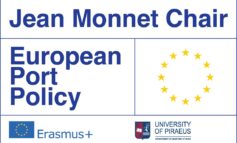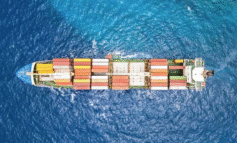The forecasts for a 24% increase in the cruise ship fleet over the next five years, i.e. from 272 ships in 2022 to 338 by 2028 – and for a +33% increase of cruise passengers, from 30 million single pax in 2019 to 40 million pax by 2030 or earlier, issue a call for significant adjustments by default.
Considering that 80% of cruise passengers visit approximately 115 ports, or 20% of all destinations, while the number of cruise ports remains constant, the necessity is more than obvious.
By 2030, the 595 ports cruise ships call at will be at most 610. Establishing the right conditions to accommodate this growth is a precondition for stakeholders, cruise lines, ports, and destinations to enjoy the benefits of cruise activities. Berth allocation systems are a sine qua non for the sustainable growth of the cruise industry.
Cruise lines need to finalise the positions and duration of the berthing of their vessels at the chosen port/destination as early as possible. This is a pre-condition for publishing and selling the cruise itineraries that will take place two or even more years later. The technical characteristics of cruise ships (indicatively, the length, draft, and the number of passengers the cruise ship hosts) dictate using a berth of specific specifications. The effective planning of port services requires the preparation of services for both the vessel and the passengers so that the latter are satisfied and last-minute ‘surprises’ are avoided.
The partners that need uniform principles applied to berth allocation procedures the most are ports. Several ports operate at maximum capacity, but they are struggling to operate efficiently. Without confirmed scheduling, many ports receive several ships on the same day, but there are more idle days than expected. Finally, the planning of the ships contributes to the harmony of the relations with the local communities: the arrivals take place in proportion and correspondence with the capacities of the destinations. Given the growth of cruise activities, the increase in the size of ships, and the logic imposed by the seasonality of cruising, ports need to know in advance which company, which ship, how many passengers will arrive and when.
Principles of a berth allocation system
The implementation of a berth allocation system is based on criteria such as the number of available berthing positions, the technical characteristics of each of these positions, the capacity of the land port facilities (presence of a terminal, ability to receive transport vehicles, controlling services etc.), the overall capacity of the port to adequately serve the needs of both ships and passengers and the capabilities and limitations of the infrastructure of the connected destination.
Based on these core data, ports and cruise companies are called upon to answer some ‘harder’ questions. In particular, the implementation of an effective system includes specific time constraints for successive stages of decisions, such as the timely expression of interest to approach the port by the cruise lines, the timely examination of the requests by the port, the confirmation of the priority provided by the port to the cruise line about the ships that guarantee the preferred berth, if available, the process of changes and cancellations in case of relevant needs, and the commitment of ports and cruise lines to a specific plan for specific dates. Timely determination involves decisions made at least two years before a cruise ship approach, with any changes completed 18 or more months after that approach.
In any case, there is no ‘perfect solution’, Instead, there are options to be based on the cooperation of ports (port authorities, service providers), destinations (chambers, trade associations, tourism businesses), and cruise lines.
Cooperation between ports is also important. As cruise lines develop circular itineraries, the possibilities and perspectives of the neighbouring ports should be taken into account. It is worthwhile for the parameters of berthing systems to be applied at a broader set of ports, regardless of size and characteristics. It should also be taken into account that for multiple reasons (e.g., technical parameters or weather conditions), berths differ. At the same time, the capacity to receive cruise ships and passengers is determined not only by the capacity of the port but also by the capabilities of the connected tourist destination.
The role of ports (or terminal managers) in developing direct relations with cruise lines should not be underestimated. Decisions are worth making without intermediaries and without being subject to pressures. The system should be simple and applied transparently, always based on the actual port, vessel, and destination capacities. Most cruise lines have a long and productive relationship with ports, so it would be helpful if everyone realized the importance of setting up a system of scheduled arrivals and predetermined berthing.
Through synergies, mutually acceptable operational proposals will be developed, allowing specific early berthing allocation principles to be implemented in as many cruise ports as possible, further promoting the sustainable development of cruising.
- The views were first expressed during the CLIA Cruise Week 2024 and a panel session on “Berth Allocation Policies and Systems”, Genova, Italy, March 2024. You might download the presentation here













